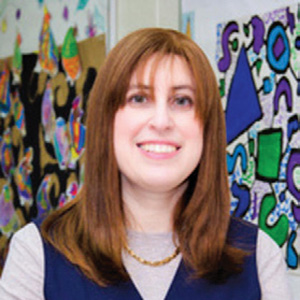
“Yes, let’s change our plan so that the wire is now connected from this point,” I hear one sixth grader explain to another, as I observe them with their circuit boards, creating an original game.
“Animals/Pawing, Dripping, Stepping…” I listen to second grade voices reading aloud their cinquain poems and self-correcting, as they notice inconsistencies between what they wanted to write and what they actually wrote.
“Why is there more than one way to divide areas into regions?” one fourth grader asks another during a social studies turn and talk.
The kindergartener takes the chopsticks and carefully lifts the sight word out of a basket filled with shredded paper. He grins and says, “I am using the camera in my mind,” as he reads the word aloud, “will.” He shares it with his partner and they each take a marker and write the word on their whiteboards.
What sort of voice drives the choice of elementary school for a precious child? Is it an active, passionate voice with a firm viewpoint or a passive, lackadaisical “default” choice? Many people do not verbalize their reasons, but very often the social milieu is of paramount importance. I would posit that parents should add the consideration of educational philosophy as a pillar of their planning process. How well does the school’s hashkafa and educational philosophy align with personal parenting goals and approach to transmitting Jewish practices and values? Thoughtful, independent parents will engage in a nuanced discourse, recognizing how a school blends into and supports their personal family values.
We recently completed the sefira period where we plan daily incremental mitzvah or midah objectives until we receive the Torah on Shavuot. A school that embraces a metacognitive overlay employs this ancient goal-oriented Jewish idea. When a school engages a passionate, mission-driven cohort of teachers and administrators, this breeds excitement about learning and transmits joy to students. Children thrive in schools where teachers feel the efficacy, purpose and meaning in their instruction.
One of the key elements of the metacognitive framework is understanding the primacy of the transmission of cognitive tools of the mind from the expert to the novice learner. This philosophy presupposes that it is the job of parents, adults, teachers and administrators—the leaders of the culture—to develop in the next generation the thinking structures for making sense of our world. This concept is poetically and pithily described in the first mishna in pirkei avot about the beginnings of our mesorah with Moshe Rabeinu. How should our children, beginning with their language exposures in utero and certainly from the time they are born, be guided to interpret all of the data with which they are bombarded, both from the natural world and socially? What patterns will our children notice? How will they categorize that information? How will their symbolic thought develop? These and other cognitive tools are taught to children and constitute the compelling building blocks of their transmission of culture.
Practically speaking, what are some ways this manifests in the school environment? A theme with teachers this year is making the invisible, visible. Teachers focus on assumptions that we tend to make about children, whether it is in the academic realm, related to school or classroom culture, or socially-emotionally driven. Although each individual teacher concentrates on his/her area of choice, over and over again, many teachers across grade levels feel that deepening their clarity of language and breaking down steps for each task, including ways to ensure that students genuinely understand vocabulary, is the invisible barrier for many students. Both teachers and students have opportunities to evaluate and adjust their thinking processes, with teachers modeling for students.
Another crucial aspect is encouraging teachers to explicitly share learning goals with students. Students like knowing the meaning and purpose for their learning, and they appreciate having shared ownership of planning. They benefit from charting their progress, reflecting on their needs and assessing their success. This weaving of a purposeful mindset into all areas of academic and social-emotional instruction yields a lot of excitement around the learning process.
Ultimately, these thoughtful, intentional “small” changes, with teachers and administrators who are passionately driven, disproportionately impact students positively. Tweaks to other facets of the educational process support a unified vision. In this kind of purposeful model, Aristotle’s idea of synergy, “The whole is greater than the sum of its parts,” gains credence. The mission matters.
By Chana Luchins
Chana Luchins is the assistant principal of general studies at Rabbi Pesach Raymon Yeshiva.











